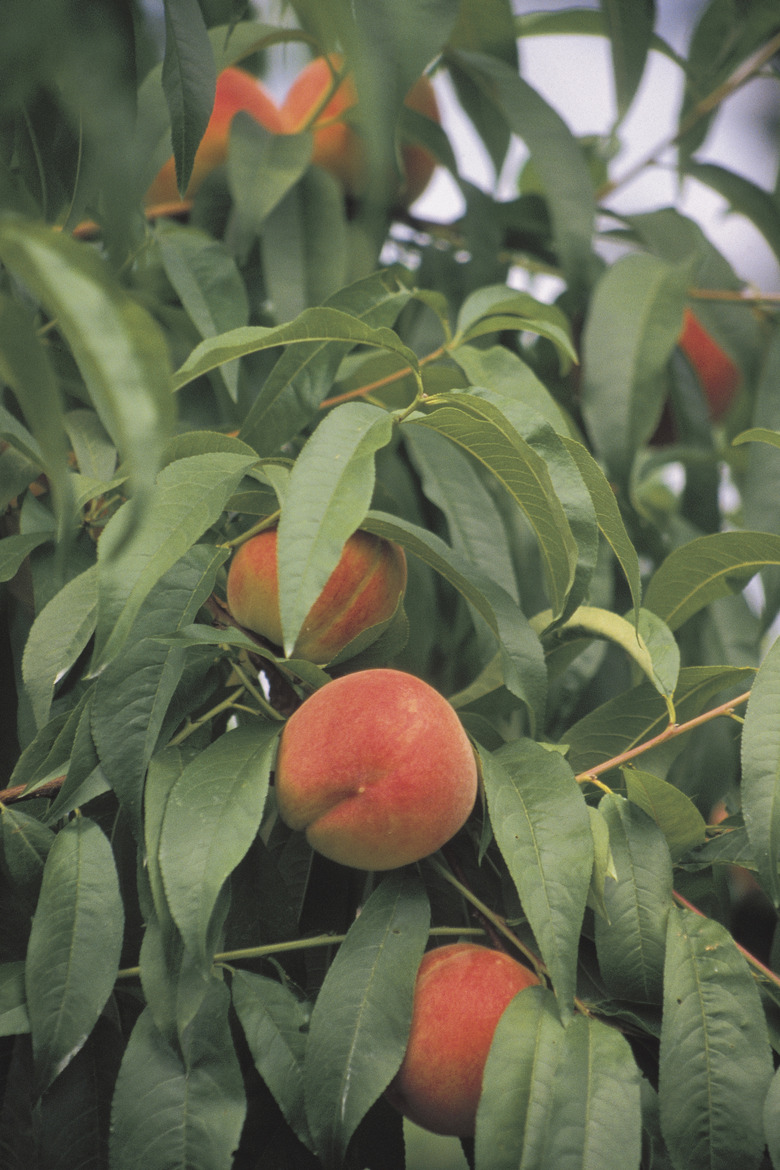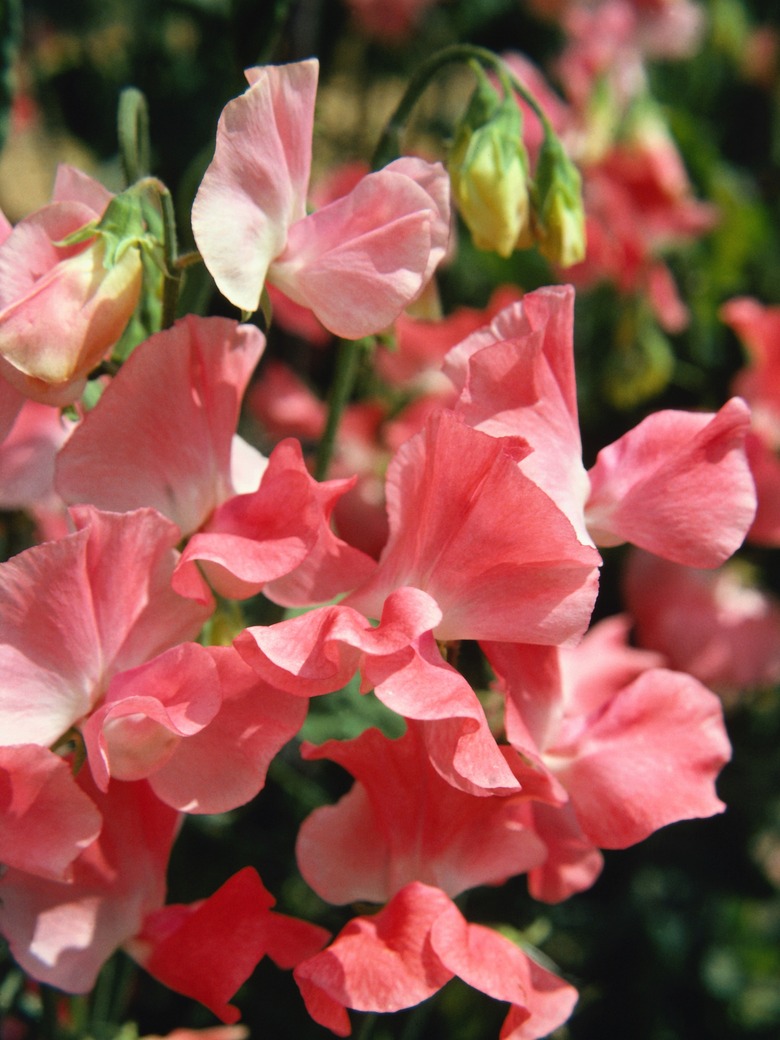Yellow Leaves On Peach Trees
Peach trees (Prunus persica) are native to China but have naturalized in the United States, especially in the southern region. Growing peaches in the home landscape is satisfying, but requires a fair amount of work, especially in the northeastern climate. Peaches like a hot and dry environment; cold, wet weather invites fungal or bacterial diseases. The best way to avoid peach-tree diseases is to promote a healthy tree. Yellow leaves on peach trees signal distress.
Step 1
Yellow leaves on a peach tree signal nitrogen deficiency. Peach trees require little phosphorus or potassium, but they do require adequate nitrogen. Nitrogen aids in healthy lush leaf growth. "Rodale's Organic Gardener's Guide to Vegetables and Fruits" is an excellent reference book and suggests applying concentrated nitrogen sources (cottonseed meal and dried blood) in the springtime when the buds swell. Also, in the fall, use composted manure.
Weed Control
Step 1
Managing weeds is essential for peach trees to create large, sweet fruit. Weed roots compete with peach tree roots for water. When the peach tree directs energy into creating and ripening fruit, the tree requires an ample and steady supply of water. To conserve moisture and keep weeds down, apply a thick layer of mulch around the fruit tree. Start applying mulch 3 to 6 inches away from the trunk to the drip line, where the branches end. Do not apply mulch directly against the tree trunk because the moisture harbors disease on the tree bark.
Step 2
- Yellow leaves on a peach tree signal nitrogen deficiency.
- Rodale's Organic Gardener's Guide to Vegetables and Fruits" is an excellent reference book and suggests applying concentrated nitrogen sources (cottonseed meal and dried blood) in the springtime when the buds swell.
Peach Leaf Curl
Step 1
Peach leaves that turn yellow and red and curl up indicate another disease called peach leaf curl, caused by the Taphrina deformans fungus. By the time the leaves turn yellow and curl, the only option for the current year is to take steps to maintain the tree's overall health. Remove all the fruit so the tree is not sending energy to fruit production. The tree needs all its energy to fight the fungus. Fertilize the tree and water regularly and deeply. Establish a spraying schedule with fungicides — but be aware that fungicides do affect the beneficial insect community. Spray sparingly and read instructions. Direct your energy into establishing a healthy environment for the peach tree to withstand future diseases and pests.
Step 2
- Peach leaves that turn yellow and red and curl up indicate another disease called peach leaf curl, caused by the Taphrina deformans fungus.
- By the time the leaves turn yellow and curl, the only option for the current year is to take steps to maintain the tree's overall health.
Healthy Peach Trees
Step 1
A healthy tree is the best insurance against disease. Concentrated nitrogen applications like those listed above work well with fast results. A more natural but also slower method is to plant natural sources of nitrogen around the drip line of the peach tree. Peanuts, peas and other legume plants naturally fix nitrogen in the soil via their root systems. Alfalfa is another source of nitrogen. Adequate watering is essential to healthy fruit maturation. According to Rodale's methods, "if a dry spell should develop ... watering every other day with 25 gallons per tree will help until the rains return."
Step 2
- A healthy tree is the best insurance against disease.
- A more natural but also slower method is to plant natural sources of nitrogen around the drip line of the peach tree.

